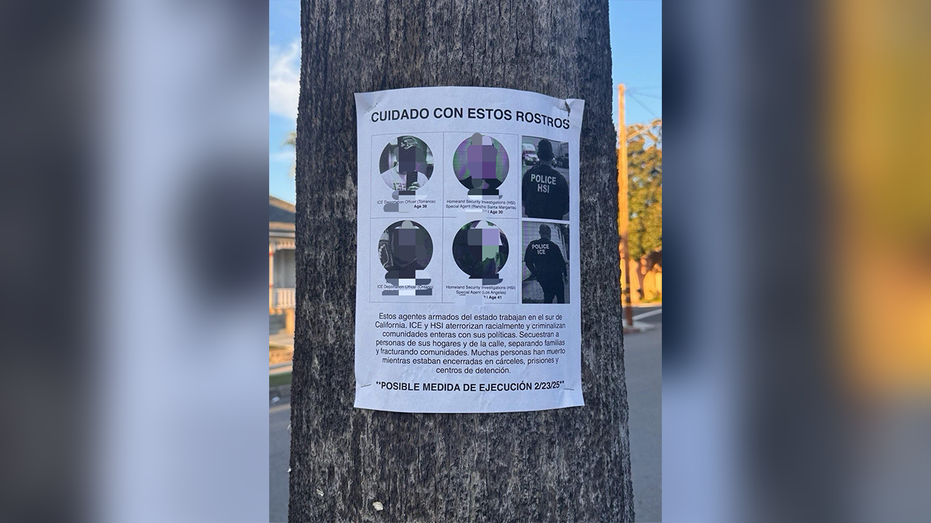The Vietnam War Is Still Killing People, 50 Years Later
After the Trump administration cut funding to demining efforts, unexploded ordnance from the Vietname war killed four people in February alone. The post The Vietnam War Is Still Killing People, 50 Years Later appeared first on The Intercept.

When a tank crashed through the gates of the presidential palace in Saigon 50 years ago today, the Potemkin state of South Vietnam collapsed, and the Vietnamese war of independence, fought in its final phase against the overwhelming military might of the United States, came to a close.
America lost its war, but Vietnam was devastated. “Sideshow” wars in Cambodia and Laos left those countries equally ravaged. The United States unleashed an estimated 30 billion pounds of munitions in Southeast Asia. At least 3.8 million Vietnamese died violent war deaths, an estimated 11.7 million South Vietnamese were forced from their homes, and up to 4.8 million were sprayed with toxic herbicides like Agent Orange.
April 30, 1975, was also, the New Yorker’s Jonathan Schell observed at the time, “the first day since September 1, 1939, when the Second World War began, that something like peace reigned throughout the world.”
Peace on paper, perhaps, but the violence never really ended.

The U.S. did whatever it could to cripple the reunited Vietnam. Instead of delivering billions in promised reconstruction aid, it pressured international lenders like the International Monetary Fund and World Bank to reject Vietnamese requests for assistance. The newly unified nation of farmers had no choice but to till rice fields filled with unexploded American bombs, artillery shells, rockets, cluster munitions, landmines, grenades, and more.
The war’s toll continued to rise, with 100,000 more casualties in Vietnam in the 50 years since the conflict technically came to a close and many more in the neighboring nations of Southeast Asia.
After all that, America could have learned something.
At the cost of over 58,000 American lives and $1 trillion, at current value, America’s shocking defeat at the hands of South Vietnamese guerrillas and soldiers from what then-Secretary of State Henry Kissinger called a “little fourth-rate power like North Vietnam” could have led to lasting change. The U.S. might have grappled with the suffering it inflicted across Southeast Asia and pledged not to turn another region of the world into a charnel house and a munitions scrapyard. The people who led the U.S. to war and those who have assumed power since then could have absorbed how dangerous hubris can be; the inability of military might to achieve political aims; and the terrible costs of unleashing devastating firepower on a tiny nation. They could have grasped the merits of restrained foreign policy.
For a very brief moment, Congress did attempt to require human rights concerns to factor into American foreign policy. That urge soon evaporated.
Instead, America turned a blind eye to continued deaths in Vietnam and backed a genocidal regime in neighboring Cambodia to further injure the country with whom it had just made peace. Then the U.S. quickly doubled down, setting in motion a means to turn its humiliating defeat in Southeast Asia into a 20-year war in Southwest Asia, against even weaker opponents, that ended in another mortifying loss.

“We were taught that our armies were always invincible, and our causes were always just, only to suffer the agony of Vietnam,” President Jimmy Carter observed in his famous “malaise speech” on July 15, 1979, while paradoxically claiming that the “outward strength of America” was unequaled. The United States was, he said, “a nation that is at peace tonight everywhere in the world, with unmatched economic power and military might.”
But even as he mouthed those words to the American people, Carter was setting in motion secret operations that sowed the seeds for a Soviet invasion of Afghanistan, the 9/11 attacks, and more than two decades of forever wars. America would trade one agony for another, making rash choices that would inflict pain on its own people and devastation across another entire region.
On July 3, 1979, Carter authorized the CIA to provide covert aid to insurgents, the nascent mujahideen, fighting the Soviet-backed regime in Afghanistan. “On that day,” Carter’s national security adviser Zbigniew Brzezinski recalled, “I wrote a note to the president in which I explained to him that in my opinion this aid would lead to a Soviet military intervention.” When his prediction came true later that year, Brzezinski gloated: “We now have the opportunity of giving the USSR its Vietnam War.”
Stoking war for the purpose of revenge by proxy had dire costs. For the Soviet Union, the conflict became a “bleeding wound,” in the words of that country’s leader, Mikhail Gorbachev. Over nine years, the USSR lost 14,500 soldiers. The people of Afghanistan endured far worse, suffering an estimated 1 million civilian deaths. The Soviet withdrawal in 1989 paved the way for a brutal civil war followed by the Taliban takeover of the country.

The covert conflict by America and its allies Pakistan and Saudi Arabia also empowered Islamic extremists — including Osama bin Laden — and set the stage for the rise of his terror group, Al Qaeda. The Soviet Union quickly passed from existence, collapsing in 1991. Bin Laden soon turned his attention to American targets.
In 2001, 19 Al Qaeda operatives with box cutters used airliners to kill almost 3,000 people at the World Trade Center, the Pentagon, and in Shanksville, Pennsylvania. They were able to goad the world’s sole superpower into eschewing a measured law enforcement response to the 9/11 attacks for a ruinous “global war on terror.” The forever wars, which began in Afghanistan, spread to Pakistan, Somalia, Iraq, Libya, the African Sahel, Syria, Yemen, and beyond.
It took the United States until 2011 to finally kill bin Laden, but the conflict he ignited has raged on without him. The U.S. would suffer wheel-spinning stalemates across multiple war zones and another embarrassing defeat, this time in Afghanistan.
But just as with Vietnam, other people suffered far worse than Americans. More than 905,000 people have died due to direct violence in the forever wars, according to Brown University’s Costs of War Project. Around 3.8 million more have died indirectly from economic collapse, the destruction of medical and public health infrastructure, and other causes. As many as 60 million people have been displaced by the post-9/11 wars in Afghanistan, Pakistan, Iraq, Syria, Libya, Yemen, Somalia, and the Philippines. All that death and suffering has been purchased by the U.S. government for a butcher’s bill of about $8 trillion and climbing.

President Donald Trump, despite his “peacemaker” rhetoric, has kept the forever wars burning with attacks in Iraq, Somalia, Syria, and Yemen. Trump has also been threatening war with Iran, a throwback to the first flush of the war on terror, when the popular quip among neoconservatives was: “Everyone wants to go to Baghdad. Real men want to go to Tehran.” Such a conflict could result in tens or hundreds of thousands of deaths. If it spiraled into Israeli nuclear strikes on Iran, many millions could die.
The Trump administration has even found a way to add more casualties to the toll of the Vietnam War.
Trump’s 90-day freeze on foreign aid ground U.S.-funded programs in Southeast Asia, including demining initiatives, to a halt. In February, an unexploded U.S. bomb in Laos killed two teenaged girls. That same day, two toddlers in Cambodia were killed by another piece of unexploded ordnance.

Aid has since resumed, but it remains unclear for how long and in what amounts. What isn’t in doubt is how much it is desperately needed. Millions of acres in Vietnam — almost one-fifth of the country — were still contaminated by U.S. munitions as of 2023. There might be as much as 800,000 tons of unexploded ordinance, or UXO, littering the nation. Experts say it could take a century or more to remediate Southeast Asia — and that was with full, uninterrupted U.S. assistance.
“In the long run, the abrupt withdrawal or decrease of U.S. support could permanently undermine UXO programs in the region if alternative funding and programs fail to fill the void. The landmines and UXO problem in Laos, Cambodia and Vietnam are one of the most persistent and complex in the world, requiring consistent funding and a multifaceted approach over many decades,” Sera Koulabdara, the chief executive of Legacies of War, a U.S.-based advocacy and educational group focused on demining, told The Intercept. “Without this support, efforts to resolve the problem will be significantly hindered.”
More than 15 years ago, I traveled around Vietnam meeting survivors of the long, lethal tail of the American war and covering the work of a local demining team. I spoke with parents whose children had been maimed and killed by American munitions and youngsters orphaned by decaying American ordnance, including a girl named Pham Thi Hoa.
Pham’s family suffered immensely from the American war. One set of great-grandparents were killed, in 1969, when their hamlet was bombed. That same year, a great-aunt and three of her children died the same way. Sometime after the war ended in 1975, Pham’s other great-grandfather was killed by a landmine. A great-uncle died from an unexploded ordnance blast in 1996. And in 2007, Pham’s father, mother, and 3-year-old brother were all killed by a 105 mm U.S. artillery shell.
Pham made an indelible impression on me. I arrived in her village one afternoon expecting to interview a young woman of 18. When my car pulled up, an 8-year-old sprite of a girl with large brown eyes and a bright smile came bounding toward it. It tore my heart out. Somehow, I knew that I had been misinformed and that this was the survivor. I also knew there was no way I could ask this child what happened to her family. When she was out of earshot, her grandmother offered up a spare but gruesome account of bodies ripped in two and a toddler reduced to a basketful of viscera.
America’s conflicts keep killing people long after the guns fall silent.
I haven’t kept in touch with her, but Pham should be about 25 years old. There’s a good chance she’s married and may even have children of her own. They are going to grow up in a Vietnam contaminated by the deadly detritus of an American war that ended 50 years ago. Their children will too. Just how many generations of this family will live in such peril remains to be seen. The same can be said of people in Afghanistan, Cambodia, Iraq, Laos, Syria, and beyond.

Wars aren’t over when they’re over. America’s conflicts keep killing people long after the guns fall silent. Just how many more people die may depend, in part, on the Trump administration’s decisions in the weeks and months ahead.
“No one knows how many years it would take to clear all the UXO in Southeast Asia. This will all depend on resources available. The most important thing we should prioritize is how many lives we can save from these explosive remnants of war,” said Koulabdara. “We have seen the number of accidents decline and this is a direct result of funding the clearance efforts and explosive ordnance risk education. These are vital programs that we must preserve until Laos, Cambodia and Vietnam are impact-free from the dangers of 50-year-old war trash.”
The post The Vietnam War Is Still Killing People, 50 Years Later appeared first on The Intercept.





















































![‘Andor’ Star Varada Sethu on Cinta’s [SPOILER], Her Future With Vel and Killing Tay Kolma: ‘It’s Like Death When She Turns Up’](https://variety.com/wp-content/uploads/2025/05/cinta.jpg?#)






















